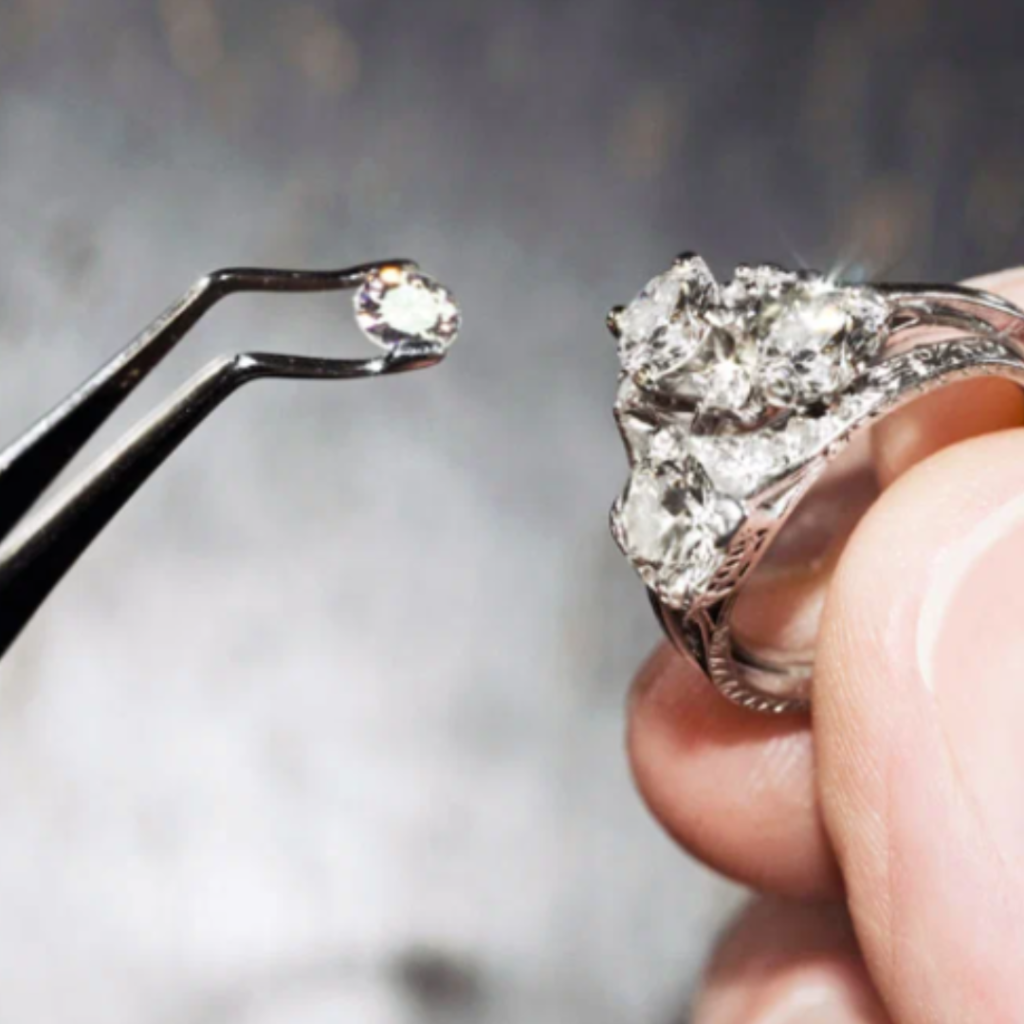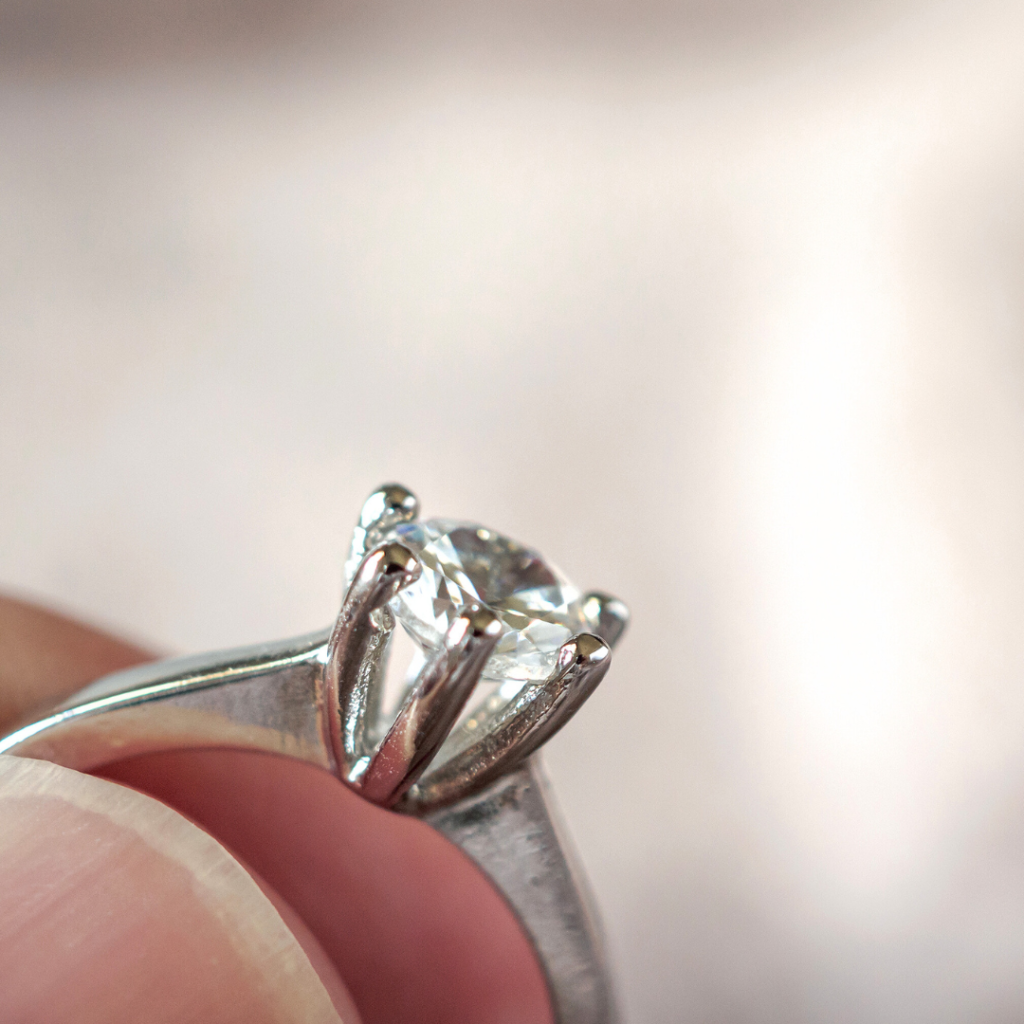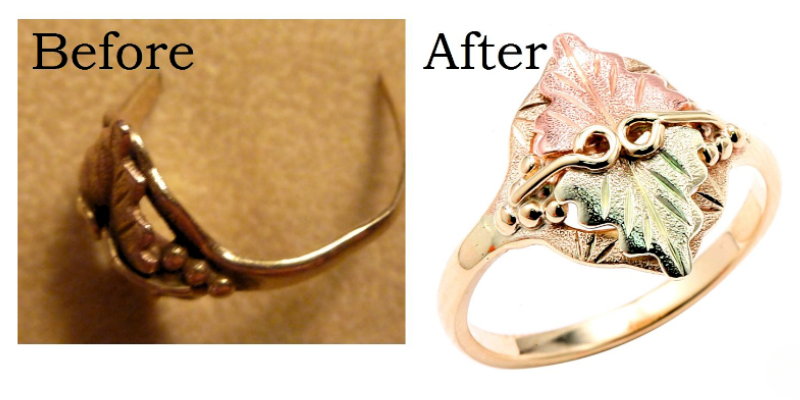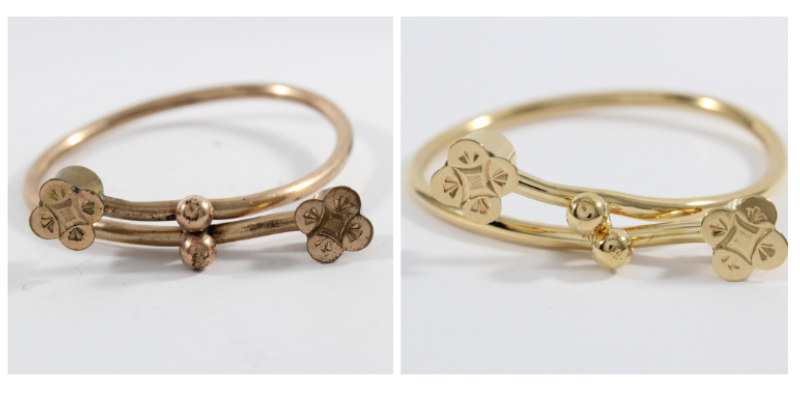
Your jewellery is a treasured heirloom that frequently has both sentimental and monetary significance. It is more than just an accessory. However, even the best items may begin to show signs of wear and tear with time. Early recognition of these symptoms can stop additional harm and maintain the structure’s beauty and functionality. Let’s explore the top 10 common signs that your jewellery needs to be repaired so that your priceless items stay in perfect shape
Identify When to Get Your Jewellery Fixed
From delicate engagement rings to heirloom necklaces, jewellery is an investment worth protecting. Over time, even the finest pieces can succumb to wear and tear, accidental damage, or the ravages of the environment. Neglecting these issues can lead to irreversible damage or costly replacements. By recognizing the following ten common signs, you’ll know when it’s time to seek professional jewellery repair services.
1. Loose Stones or Missing Gems
Loose or missing stones are among the most obvious indications that your jewellery needs repair. Gemstones are typically secured in their settings using small metal prongs, bezels, or other mounting techniques. However, these settings can gradually loosen over time due to wear and tear, impact, faulty construction, or metal fatigue.
Types of Stone Settings
- Prong Setting: The most common type, where the gemstone is held in place by small metal prongs or claws.
- Bezel Setting: The gem is encircled by a thin metal rim or collar.
- Channel Setting: Stones are set side-by-side and held in place by parallel metal walls.
- Pave Setting: Smaller stones are set closely together, creating a smooth, continuous surface.
Causes of Loose Stones
- Wear and Tear: Daily activities, friction, and general use can cause settings to loosen over time.
- Impact or Rough Handling: Dropping or knocking your jewellery against hard surfaces can shift stones.
- Faulty Setting: Poorly constructed or low-quality settings may fail prematurely.
- Metal Fatigue: The metal in older settings can weaken and lose its grip on stones.
If you notice a loose stone or an empty setting where a gem used to be, it’s crucial to have your jewellery repaired promptly. Leaving it unattended increases the risk of losing the stone entirely, potentially ruining the piece.
2. Bent or Misshapen Prongs
Prongs, the small metal claws that hold gemstones in place, are susceptible to bending or becoming misshapen over time. This issue is particularly common in rings and other jewellery that endures frequent wear and tear.
Risks of Damaged Prongs
- Stone Loss: Bent or worn prongs can no longer secure the gemstone properly, increasing the likelihood of it falling out.
- Scratching or Abrasion: Protruding or uneven prongs can scratch the stone or snag on clothing, hair, or other surfaces.
- Snagging: Misshapen prongs can catch on fabrics, potentially damaging your jewellery or causing personal injury.
If you notice any bent, twisted, or otherwise misshapen prongs on your jewellery, it’s essential to have them repaired or replaced by a professional. This simple fix can prevent costly damage and prolong the life of your treasured pieces.

3. Cracks or Chips in Stones
While gemstones are renowned for their incredible hardness, they are not indestructible. Even the toughest stones can develop cracks, chips, or other surface flaws from impact, excessive pressure, or sudden temperature changes.
Common Causes of Cracks/Chips
- Dropping the Jewellery: A hard fall or impact against a solid surface can easily fracture or chip gemstones.
- Hitting Against Hard Surfaces: Knocking your ring against a countertop, sink, or other hard object can cause similar damage.
- Extreme Temperature Changes: Sudden exposure to extreme hot or cold temperatures can stress and crack some gemstones.
These flaws not only detract from the stone’s beauty and brilliance but also compromise its structural integrity. Cracks or chips can worsen over time, eventually causing the gemstone to split or shatter completely. Prompt repair or replacement is recommended to salvage the piece and prevent further damage.
4. Thin or Worn Shanks
The shank is the circular band of a ring that encircles the finger. With constant wear, the shank can become thin, uneven, or misshapen, increasing the risk of breakage or stone loss.
Signs of a Worn Shank
- Uneven Thickness: The shank may be visibly thinner in certain areas due to friction or abrasion.
- Visible Grooves or Dents: Dents or grooves can form from impact or repeated pressure points.
- Bent or Oval Shape: The once-circular shank may take on an oval or distorted shape.
A worn or damaged shank can compromise the structural integrity of the entire ring, potentially causing it to break or lose its gemstones. Seeking professional repair or replacement of the shank is crucial to ensure the longevity and safety of your ring.

5. Broken Chains or Clasps
Necklaces, bracelets, and other jewellery with chains are particularly vulnerable to breakage, especially at the clasp or closure. Over time, these components can weaken or fail due to wear, exposure to chemicals, or accidental stress.
Common Chain/Clasp Issues
- Worn Spring Rings: The small spring rings that connect chains or clasps can stretch and wear out, eventually breaking.
- Broken Jump Rings: These tiny circular links can crack or split, causing the chain to separate.
- Stretched or Kinked Links: Constant pulling or twisting can distort and weaken individual chain links.
A broken chain or clasp not only renders the jewellery unwearable but also increases the risk of losing the entire piece. Prompt repair or replacement of these components is essential to restore functionality and prevent costly losses.
6. Tarnish or Discoloration
Tarnish and discoloration can dull the brilliance of metals like silver, gold, and platinum over time due to exposure to various environmental factors.
Causes of Tarnish
- Oxidation: Metals react with oxygen in the air, forming a dull, discoloured surface layer or patina.
- Skin Oils and Perspiration: Body oils and sweat can cause metals to tarnish or discolour more rapidly.
- Household Chemicals: Exposure to cleaning products, cosmetics, or other household chemicals can accelerate tarnishing.
While tarnish is generally a cosmetic issue, it can also indicate more serious underlying problems, such as metal degradation or improper alloy composition. Professional cleaning, polishing, and protective coatings can help restore your jewellery’s original lustre and prevent further tarnishing.

7. Scratches or Surface Abrasions
Scratches and surface abrasions on metal surfaces are inevitable consequences of daily wear and tear. While minor scratches may be acceptable, excessive or deep scratches can compromise the metal’s integrity and aesthetic appeal.
Preventing Scratches
- Proper Storage: Storing jewellery in soft, protective pouches or cases can minimise scratches.
- Removing Before Activities: Taking off rings, bracelets, or watches before engaging in manual tasks or sports can prevent accidental scratches.
- Periodic Polishing: Regular professional polishing can help remove surface scratches and restore shine.
Severe scratches or abrasions may require more extensive repair or refinishing services to restore the jewellery’s original condition. Ignoring these issues can lead to further deterioration and potentially irreversible damage.
8. Dull or Cloudy Gemstones
Gemstones that appear opaque, dull, or cloudy have likely lost their brilliance and lustre due to accumulated dirt, oils, or minor scratches on the surface.
Rejuvenating Gemstones
- Professional Cleaning: Specialised cleaning techniques and solutions can effectively remove built-up grime and residues.
- Re-polishing or Resurfacing: Gently polishing the gemstone’s surface can restore its original clarity and sparkle.
Dull or cloudy gemstones not only detract from the jewellery’s beauty but can also indicate more serious issues, such as internal damage or structural flaws. Regular professional cleaning and maintenance can help prevent these problems and ensure your gemstones remain brilliant and eye-catching.
9. Worn or Damaged Plating
Many jewellery pieces feature plated finishes like rhodium or gold over a base metal. While these coatings enhance the appearance and durability of the jewellery, they can eventually wear off or become damaged, exposing the underlying metal and giving an unsightly appearance.
Benefits of Re-plating
- Restores Luster and Color: Fresh plating can bring back the jewellery’s original shine and vibrant hues.
- Protects Against Tarnishing: Plating acts as a barrier against environmental factors that cause tarnishing.
- Refinishes Scratched Surfaces: The re-plating process can smooth out and conceal minor surface scratches or abrasions.
Re-plating services can breathe new life into worn or damaged jewellery, reviving its aesthetic appeal and protecting it from further deterioration. However, it’s essential to have this process performed by a skilled professional to ensure consistent and long-lasting results.

10. General Damage or Extensive Wear
In some cases, jewellery may simply become too damaged, fragile, or outdated to be wearable without extensive professional restoration. Constant wear, age, and exposure to the elements can take a toll, necessitating more comprehensive repairs.
Options for Restoration
- Complete Overhaul and Rebuild: Severely damaged pieces may require dismantling and reconstructing using new components or settings.
- Resetting Stones in New Mounts: Gemstones can be carefully removed and reset in updated, more secure mountings.
- Modernising Outdated Styles: Antique or vintage jewellery can be updated with contemporary elements to reflect current trends.
While restoration can be a more involved and costly process, it may be the best option for preserving sentimental or valuable pieces that have extensive damage or significant wear. A skilled jeweller can assess the condition of your jewellery and recommend the most appropriate course of action.
When to Seek Professional Repair
It’s generally advisable to seek professional repair services for any significant issues or complex repairs. Attempting intricate repairs yourself can risk further damaging your irreplaceable pieces.
Tips for Finding a Jeweller
- Ask for Referrals: Seek recommendations from friends, family, or trusted sources for reputable jewellers in your area.
- Check Reviews and Credentials: Research potential jewellers online, read customer reviews, and verify their certifications or memberships in professional organisations.
- Inquire About Repair Pricing Upfront: Reputable jewellers should provide transparent pricing information and estimates before proceeding with any repairs.
- Ensure They Offer Warranties: Look for jewellers who back their repair work with warranties or guarantees, providing added peace of mind.
Monitoring your jewellery’s condition and addressing issues promptly through professional repair services will preserve your treasured pieces for years to come. Stay vigilant for these top 10 signs that indicate it’s time for a jewellery cleaning or repair, and don’t hesitate to consult an expert when needed.
Case Study: The Importance of Prompt Jewellery Repair
Sarah had an antique ring passed down from her grandmother that held immense sentimental value. Over the years, she noticed one of the prongs holding the centre diamond had become slightly bent, but she didn’t think much of it at first. However, during a family gathering, the diamond unexpectedly fell out, leaving Sarah devastated.
Fortunately, she quickly took the ring to The Jewellery Mechanic, who specialise in ring resizing, necklace repair and all types of jewellery repair. The jeweller explained that the bent prong had gradually weakened over time, eventually failing to secure the diamond properly.
After carefully examining the ring, the jeweller recommended resetting the diamond in a new, secure mounting and replacing the worn prongs. While the restoration process came at a cost, it was a small price to pay for preserving such a cherished family heirloom.
Sarah’s experience highlights the importance of addressing jewellery repair needs promptly, even if the issue seems minor initially. Neglecting potential problems can lead to irreversible damage or loss, robbing you of your treasured pieces and the memories they hold.
“I learned the hard way that jewellery repair shouldn’t be put off,” Sarah reflected. “Thanks to the skilled work of The Jewellery Mechanic, my grandmother’s ring was restored to its former glory, and I can now pass it down to future generations with confidence.”
By staying vigilant for signs of wear, damage, or needed maintenance and seeking professional assistance when necessary, you can ensure your jewellery remains in pristine condition for years to come.
Real Customer Testimonials
Don’t just take our word for it – hear from real customers who have experienced the benefits of professional jewellery repair firsthand:
“I thought my diamond eternity band was a lost cause after years of daily wear, but the experts at The Jewellery Mechanic worked their magic. They tightened the stones, polished the metal, and it looks brand new again!” – Emily R.
“When the clasp broke on my grandmother’s antique necklace, I was devastated. But The Jewellery Mechanic replaced it with a secure new clasp and gave the entire piece a gentle cleaning. Now it’s ready to be passed down again.” – Samantha L.
“I didn’t realise how dull my engagement ring had become until The Jewellery Mechanic restored its brilliant sparkle. Their professional cleaning and polishing services made it look like the day I got engaged!” – Marissa D.
These glowing testimonials underscore the value of investing in professional jewellery repair and maintenance services. Don’t let your cherished pieces fall into disrepair – seek out a reputable jeweller you can trust.
Tips for Jewellery Care and Prevention
While professional repairs are sometimes necessary, there are also steps you can take at home to help prevent excessive wear and damage to your jewellery:
Proper Storage
- Use soft, anti-tarnish pouches or boxes to store jewellery when not in use.
- Avoid piling pieces together, which can cause scratches or tangling.
- Store pieces separately to prevent harder gemstones from abrading softer ones.
Gentle Cleaning
- Use a soft-bristled brush and mild soap and water to gently clean jewellery at home.
- Avoid harsh chemicals or abrasive cleaners, which can damage delicate surfaces.
- Have jewellery professionally cleaned and inspected annually.
Mindful Wear
- Remove rings before activities like gardening, household chores, or sports.
- Take off necklaces and bracelets before showering or swimming.
- Be cautious when wearing jewellery during rougher activities or travel.
Periodic Inspections
- Inspect your jewellery regularly for any signs of wear, damage, or needed maintenance.
- Don’t wait until a serious issue arises – address potential problems early.
- Consult a professional jeweller if you notice any concerning changes.
By combining professional repair services with proper at-home care, you can help ensure your jewellery remains in pristine condition for decades to come, preserving its beauty and value for future generations.
Monitoring your jewellery’s condition and seeking prompt professional repairs is the key to preserving your treasured pieces for generations to come. By being vigilant for the top 10 signs outlined in this guide and addressing any issues promptly, you can avoid costly damage, restore your jewellery’s beauty, and ensure its longevity.
